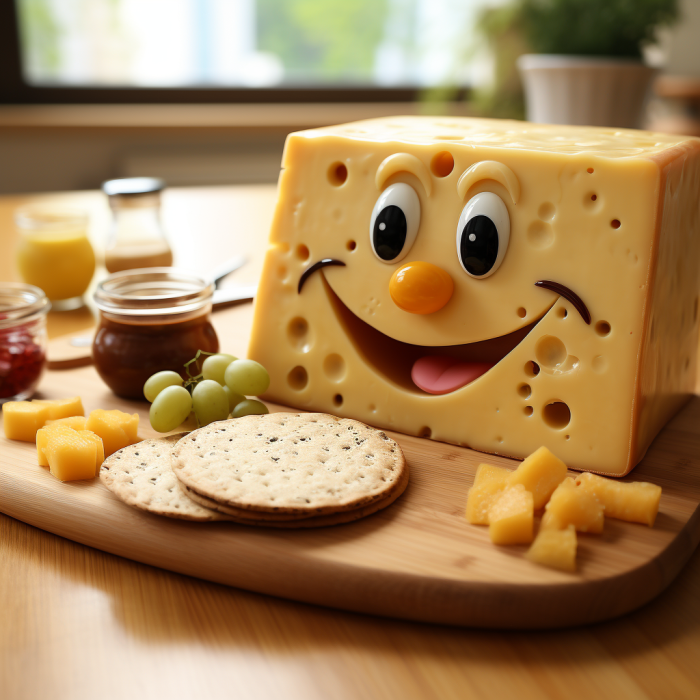The Holey Grail of Cheese: A Laughable Tale of Swiss Cheese
JANUARY 15, 2024

In the serene settings of Swiss dairies, the holes—or ''eyes'' in cheese lingo—were never a mistake but a mark of mouthwatering mastery. Propionibacterium freudenreichii, a bacterium with a name as grand as its function, busily produces carbon dioxide during the fermentation process. As the cheese matures, this carbon dioxide forms bubbles, creating the characteristic eyes that wink at us from slices of Swiss cheese.
Historically, cheese connoisseurs awaited larger holes with bated breath, as these were tell-tale signs of a flavorful and mature cheese, reminiscent of how the width of tree rings might hint at the age and stories of a tree. However, these wide-eyed beauties found themselves in a pinch when modern cheese-making met modern machinery. The larger eyes were causing a ruckus, getting trapped in the mechanical slicers, leading to a hole lot of trouble in mass production.
To keep up with the times, Swiss cheese makers fine-tuned their craft, creating smaller eyes that would allow their wheels to glide through slicers with ease. Thus, the cheese adapted, not out of evolution but of revolution—the industrial kind, proving that even a tradition-steeped entity like Swiss cheese isn't immune to change when practicality calls.
In a testament to its cultural impact, Swiss cheese has carved out a place in the hall of humorous fame. It's served as comical fodder in everything from cartoons that depict lunar surfaces resembling a Swiss cheese landscape to the ''Swiss cheese model'' used in risk analysis, which owes its name to the idea of something being full of holes.
Before we bid adieu, let's cheddar your knowledge with a brief quiz:
1. What is the name of the bacteria that contributes to Swiss cheese's holes?
2. True or False: Historically, larger holes in Swiss cheese were a sign of its maturity.
3. What led Swiss cheese makers to produce cheese with smaller holes?
Now that you''re well-versed with the hole story, share a chuckle the next time you peek through a Swiss cheese slice. Each eye is a wink into the past—a cheesy tale where history and hilarity blend beautifully together.
Eat, joke, and, in cheesy solidarity, let's continue embracing the lighter side of life, one slice at a time.
References:
1. McGee, H. (2004). ''On Food and Cooking: The Science and Lore of the Kitchen''. Scribner.
2. Kindstedt, P. (2012). ''Cheese and Culture: A History of Cheese and its place in Western Civilization''. Chelsea Green Publishing.
More in Fun Facts
May 28, 2024
How Does Cheese Survive the Challenges of Zero Gravity?
May 25, 2024
Why Does Emmental Cheese Have Holes?
May 24, 2024
How Cheese and Memorial Day Melt Together in Glorious Symphony
March 11, 2024
Is St. Patrick's Day the Cheesiest Holiday?
March 10, 2024
Why Does Easter + Cheese = The Ultimate Celebration?
February 17, 2024
Is Smoked Gouda the Ultimate Culinary Marvel?
February 15, 2024
Why Is 'Florette' the Cheese That Speaks to Your Soul?
February 14, 2024
How Cheese Can Melt Your Heart This Valentine's Day